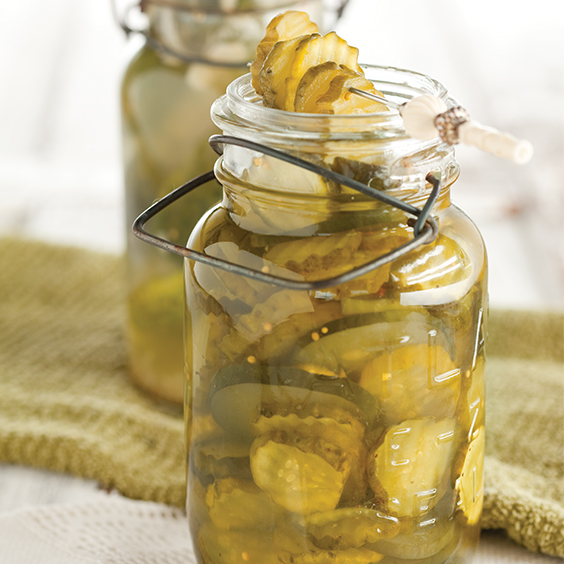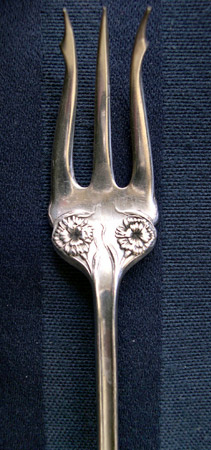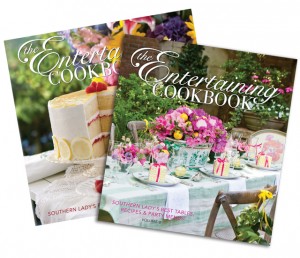We all know the dainty fork perched on the side of relish trays during holiday meals or family get-togethers. But where did this pickle fork come from?
In the South, it doesn’t matter if there’s a holiday or not, we love our home-cooked meals. Anytime company comes, you should just go ahead and expect a kitchen full of dishes and the mouthwatering aromas of freshly made casseroles, pot roasts, warm pies, and honestly, anything edible you can think of.
Setting out snacks or hors d’oeuvres for guests to graze on before a meal, or even if the neighbors are just coming over for a quick chat, is a Southern staple. There will always be something to eat out on the table.
Relish trays with olives, pickles, okra, and an assortment of other veggies make for a good snack plate, and all of us Southern ladies know that there’s a special utensil for these trays. Just like a cheese plate has a cheese knife, relish trays need pickle forks.
I was curious to know when we started using this fine flatware, so I did a little research.
Did you know the pickle fork was invented in the mid-Victorian era? According to the Victoria and Albert Museum in London, specialized dining utensils became indispensable during this time period because touching one’s food was a societal faux pas with few exceptions.
Pickle forks were initially designed for use with shallow pickle trays (like we use in relish trays today.)
In 1860, when trays were replaced by large cut-glass pickle jars in metal frames, a long handle was developed for the fork.
Well, you know how the old saying goes, “History repeats itself.” Because today, pickle forks with long handles and with short handles are a part of most silverware sets.
When the consumer market expanded and silver-plating techniques were on the rise, all sorts of forks were added to cutlery collections and dining service. Oyster forks, lobster forks, salad forks, terrapin forks, berry forks, lettuce forks, sardine forks, fish forks, pastry forks, and of course, pickle forks!
Fun fact: By the mid-1920s, the production of silverware had become so astounding that the number of pieces in any silverware pattern was limited to 55 by then-Secretary of Commerce Herbert Hoover and the Sterling Silverware Manufacturers. Talk about being in a pickle!
The fork became a household staple by the early 20th-century, and designers started designing forks to match architecture in buildings. Italian forks in the ’30s, Bakelite forks in the ’40s, three tines in the ’50s, neon plastic forks in the ’80s, and now in the 2000s, sci-fi and quirky forks.
Now of course, with all these different types of forks comes etiquette confusion. So, just remember the next time you pull out your trusty pickle fork for your relish tray—it all started in 18th-century England.




Comments 24
noice pickel forks M8
fuckboi is a terrable name
pah rubish human
Children visit these websites
fuckdamshitin a hole u dirtybasterd
oh dear
im going to go fuc.k my ho,e
I love this article. When I was choosing my silver patten before my wedding, I remember going to Adlers in New Orleans. I asked the lady helping me what pattern had the most unusual pieces. She pulled out a board with examples of all the flatware pieces in Old Master. She said they used Old Master to illustrate all the possible pieces you could register. I was in love. Now I have both the pickle fork and the bacon server, as well as a number of those odd pieces I fell in love with and use them all.
I thoroughly enjoyed this discussion about the pickle fork. I, too, collect interesting pieces of eating utensils. I mostly collect spoons with different types of bowls. Most people do not know what they are all used for. My grand children love using the little demitasse spoons for their hot chocolate and ice cream. I will have to do some research also.
Thank you for your fascinating article.
Andrea
Thank you for sharing this with us.
pleas report fuckboi1
it will help sociaty
Thank you, Phyllis for your research on this topic! It was an enjoyable read and, I learned something!
Very much enjoyed your post, Phyllis. I knew most of the pickle fork history since I’m an avid sterling flatware and holloware lover; but, the Hoover 55 limitation was definitely a fascinating fact.
As far as I’m concerned, the more unusual piece the better! Two of my favorite pieces are cocktail forks and demitasse spoons.
Growing up my parents’ and my favorite food was shrimp and we enjoyed them frequently. To say we three loved them would almost be an understatement. Cannot remember before the time when I knew how to use a cocktail fork – made eating shrimp even more delicious!!
And, demitasse spoons are such fun to use in ways beyond stirring a delightful cup of expresso, coffee or tea. A scoop of Adams Best Vanilla Ice Cream is even more
scrumptious eaten with one of this delightful little spoons!
I feed my babies with demitasse spoons! They are the perfect size! Thank you for sharing your ideas with us.
It might have been for olives.
It was also for olives, tomatos, and peppers
Fascinating history of pickle forks! I have a sterling demitasse spoon with an oval hole in the bowl. It was my grandmother’s. Can you tell me what the intended use was for this spoon? Thank you.
Olives was my first guess, also, Christy. Although most of the olive spoons I’ve seen were long-handled and had a prong (for lack of a better term) on the end of the oval bowl. Interesting…
I want to add a few more thoughts to this really fun post.
I love all the special items used to serve food correctly. I found in England a bread fork. Never saw or heard of such a thing before so I bought it and use it each family meal. I have four granddaughters and they are always amused at all the pieces I put out for their pleasure.
Thanks for all the ribbons from your journal.
I have never heard of a bread fork…..how wonderful!
Phyllis, you are so right about those Victorians! They had so many utensils, no wonder they had large homes, just to store everything! I too love a lot of the quirky pieces in the older sets, but my two favorites are lemon forks and sugar tongs…both indispensable if you adore tea parties as much as I do. Hmmm, I think it’s time to plan an Autumnal Tea! Sharon
Autumn Tea is a brilliant idea! We have cool weather here today and I am rejoicing!
Love this and always use mine, because that is what our Momma’s taught us but had never given much thought about their history! Thanks for the lesson❤️
I love this post! {As you probably guessed I would.} It’s amazing, the number of specialized utensils for the table that were deemed “necessary” during the Victorian era. Antique pickle forks are still the most requested piece of silver we sell at FrenchGardenHouse.